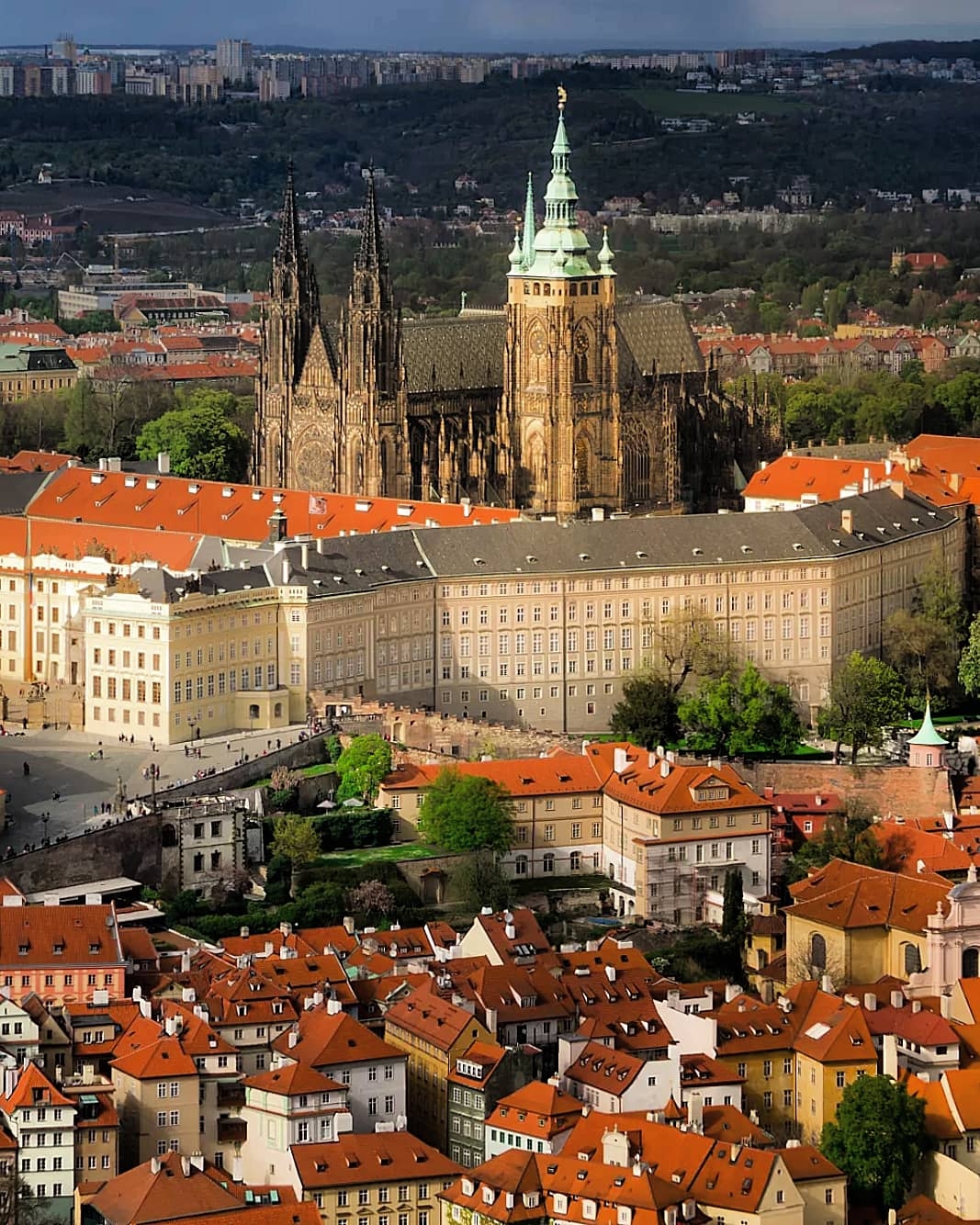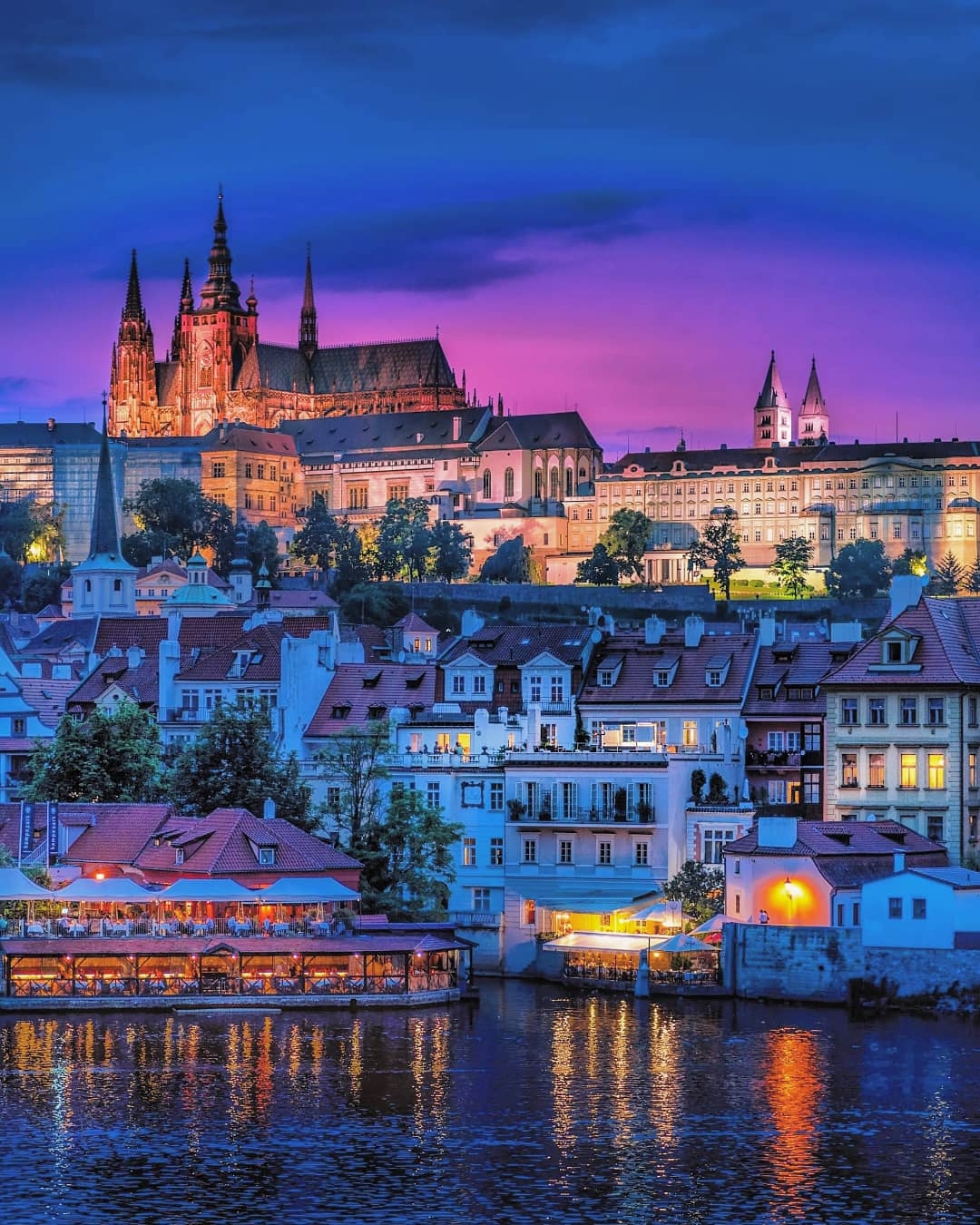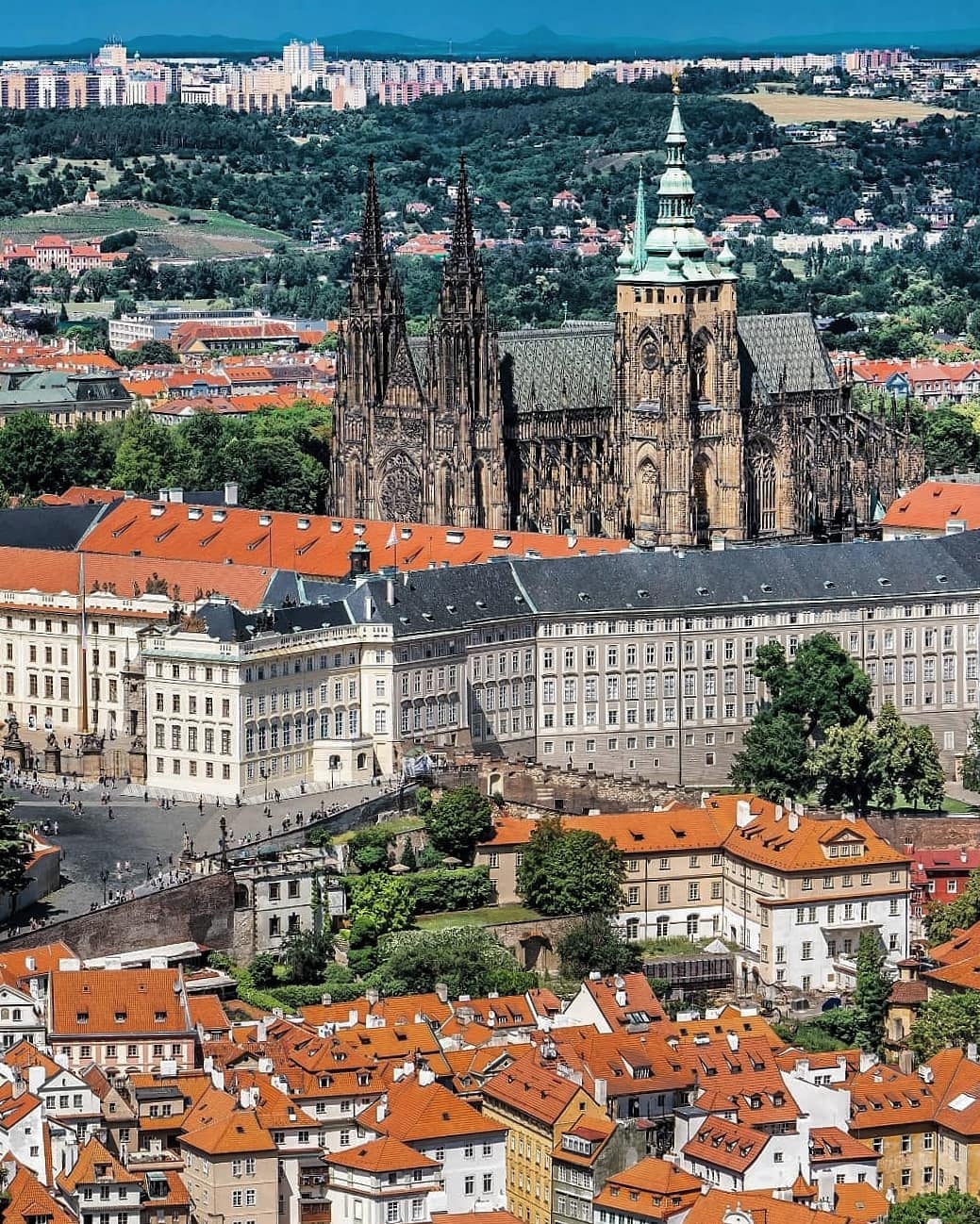PRAGUE CASTLE IS NATIONAL CULTURAL MONUMENT, THE SYMBOL OF MORE THAN l DEVELOPMENT OF THE CZECH STATE, SEAT OF RULERS AND ACCORDING TO THE GUINNESS BOOK OF RECORDS, THE LARGEST MEDIEVAL CASTLE IN THE WORLD (70 000 M2).
The seat of the rulers of Bohemia was built on a hill overlooking the River Vltava probably as early a sin the 9th century and was gradually expanded over the centuries, bearing traces of all historic periods.The castle underwent its greatest boom period during the reign of Charles IV, when it became the emperor’s residence and the seat of the Archibishop for the firs ttime. The castle was also popular with the Hapsburg Emperor, Rudolph II, who was a lover of art and alchemy .He brought his court to the castle and thus made Prague einto a significant European center of culture at the turn of the 16th – 17th centuries. An extensive period o fbuilding took place under the reign of Empress Maria Theresia in the second half of the 18th century, an dthe final modifications were then carried out in th e20th century. The Dominant of the Prague Castle is the St. Vitus Cathedral. Mausoleum of Czech kings an dthe largest cathedral in Prague was founded by King Charles IV in 1344 on the site of Romanesque basilica .The construction of this monumental building had continued for several centuries, and was definitely ycompleted in 1929. The first architect to work on the building was Matthias of Arras, who completed the eight chapels at the end of the cathedral. When he die din 1352, Petr Parleř from Gmuend continued the work. He had managed то complete the remaining parts o fthe chapel, establish the gallery, put a roof over the choir and put up temporary walls. The most sacred dplace in the cathedral is the Chapel of St. Wenceslas, richly decorated with frescoes and semiprecious stones ,where the relics of a saint’s rested. In the chamber above the chapel behind seven locks stored crown jewels – th esymbols of state authority. In the royal crypt houses remains of Charles IV and other prominent rulers. Th eRoyal Palace, the residence of Czech Princes and kings, was built on the remains of the roman Sobeslav palace .The most attractive part of the palace is the Vladislav hall – the biggest world room of Medieval Prague with a remarkable circle dome. Today it is a place of the election of the President of Czech Republic. An example eof the Romanesque style at Prague Castle is the Basilica of St. George. Established at around the year 920 b yPrince Vratislav I, was rebuilt in the 12th century. Th efaçade is in Baroque style and dates back to 17th century. There is a tomb of the first Bohemian Christian woman nmartyr St. Ludmila, a widow of Prince Vratislav I. Other royalties of the Přemyslids dynasty are buried there as well. The Golden Lane with miniature houses arose in times of Rudolph II. Here lived courtiers archers, an dthen – the Prague poor. The Royal Park on the north side of the Castle was founded by Emperor Ferdinand I. I n1538–64, here was built a Summer palace for Queen Ann. Splendid mansion in the style of high Italian Renais-sance is the only building in the Czech Republic.



